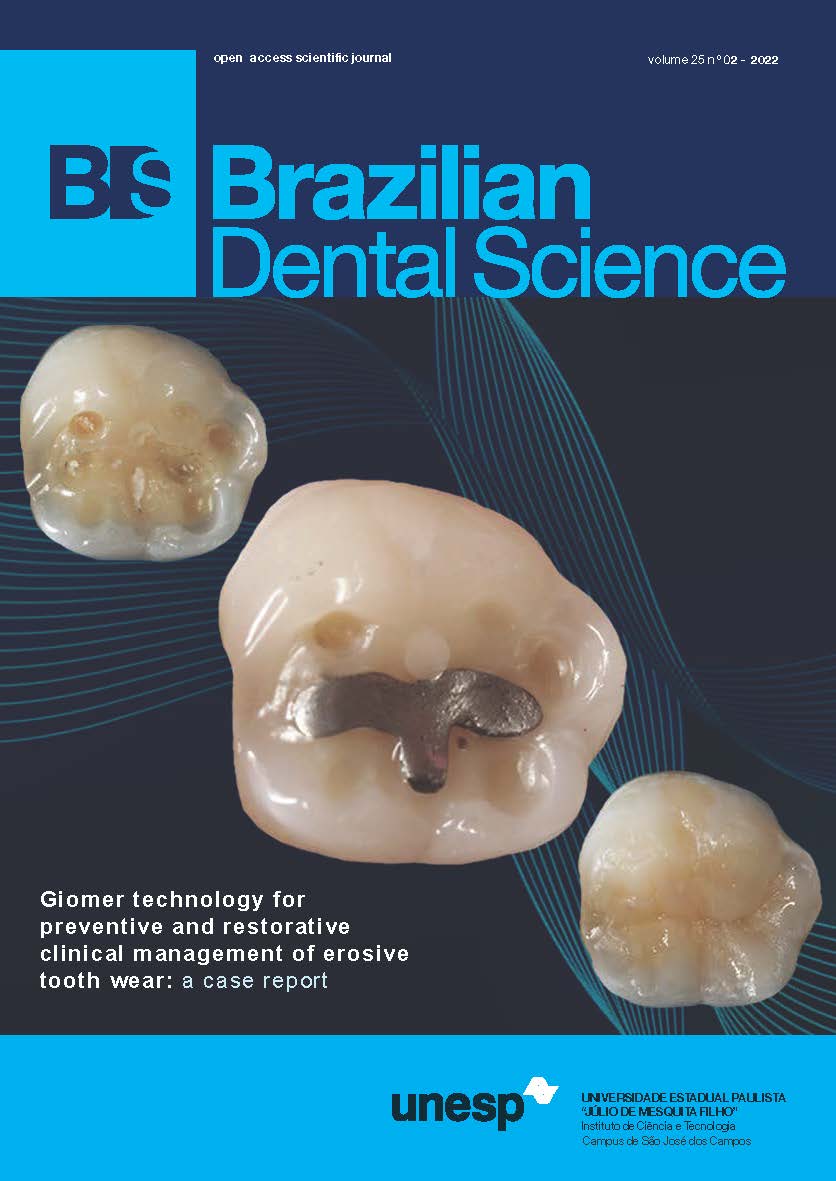Bond strength of different orthodontic brackets produced with different materials and fabrication methods
DOI:
https://doi.org/10.4322/bds.2022.e3000Abstract
Objective: The aim of this study was to evaluate the effects of material and processing methods on the bond
strength of orthodontic brackets. Material and Methods: Five types of brackets were tested: Conventional
metallic (CM), metallic sandblasted (SB), ceramic (C), polycarbonate (PC), and metallic fabricated by melting
injection molding (MIM). Shear bond strength (SBS) was conducted to check bond strength of the brackets
bonded to bovine teeth (n=10/group), and tensile bond strength (TBS) (20 brackets/group) to check bracket
retention to bonding material (n=20/group). Both, SBS and TBS were conducted with 1mm/min crosshead
speed in a universal testing machine. Bond strength was calculated in Megapascal (MPa) based on force (N) and
bracket area (mm2). Data normality was verified, and One-way ANOVA was the statistical test with Tukey posthoc
(a=0.05). Results: SB and MIM presented higher SBS compared to C, PC, and CM (p<0.05). SB and MIM
also presented significantly higher TBS compared to CM and PC (p<0.05). However, MIM was not different of
C for TBS. Conclusion: The type of material and method of fabrication are determinant factors that affect bond
strength of orthodontic brackets and melting injection molding (MIM) is a remarkable technology to improve
brackets retention during the orthodontic treatment.
KEYWORDS
Bond strength; Orthodontic brackets; Melting injection molding.
Downloads
Downloads
Published
How to Cite
Issue
Section
License
Brazilian Dental Science uses the Creative Commons (CC-BY 4.0) license, thus preserving the integrity of articles in an open access environment. The journal allows the author to retain publishing rights without restrictions.
=================




























